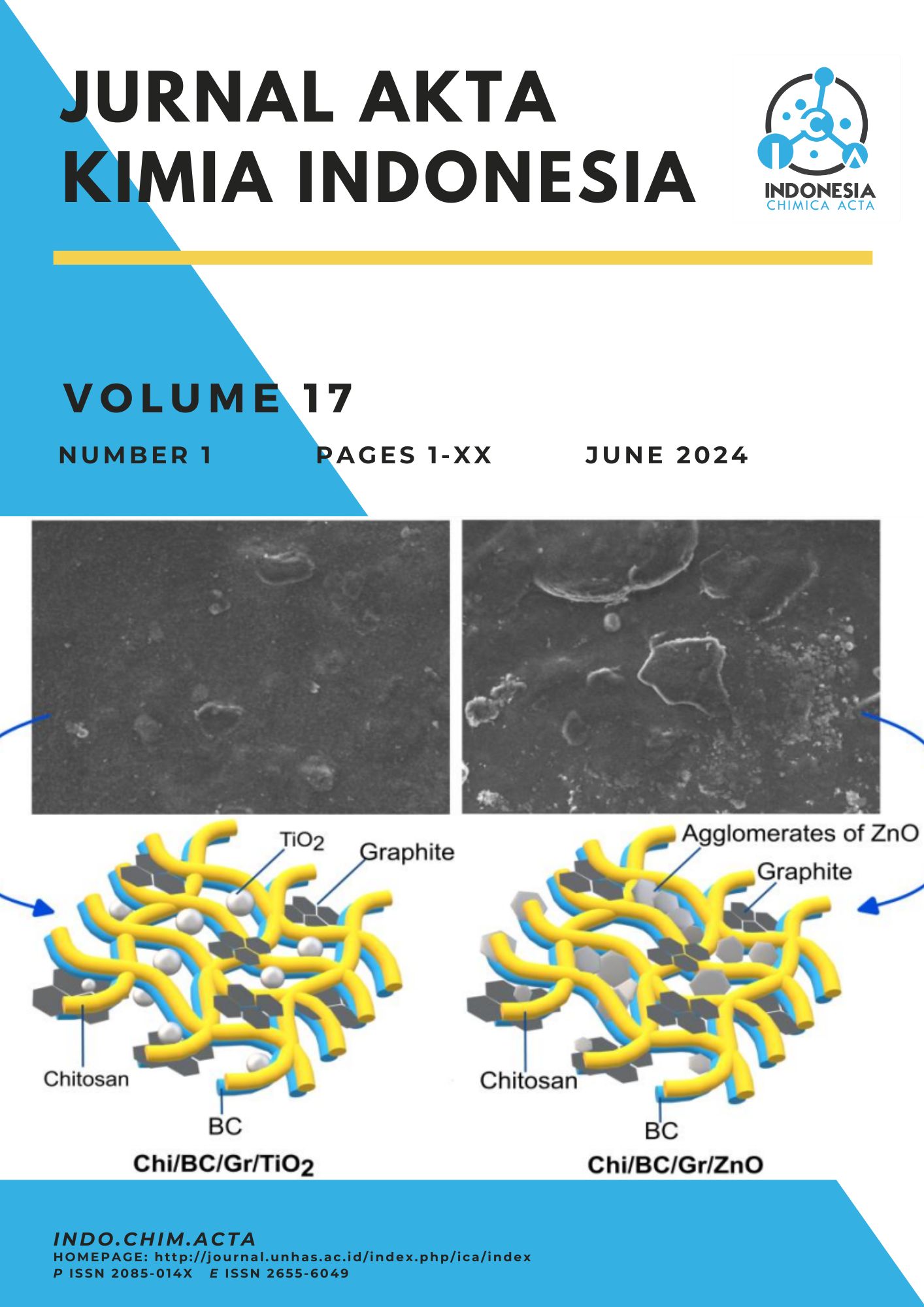Comparative Study of Synthesis and Characterisation of Complex Compounds of Co(II) and Fe(III) Metal Ions with Ligands N-Etilisopropyldithiocarbamate and Its Application as an Additive in Lubricants
Abstract
The aim of the synthesis and characterization of Co(II) and Fe(III) metal ions with N-Ethylisopropyldithiocarbamate ligands is to produce dithiocarbamate complex molecules that can be utilized in pharmacology, industry, agriculture, and chemistry in the future. The in situ method, which involves reacting secondary amines with carbon disulfide in ethanol solvent (dithiocarbamate ligands) and metals dissolved in ethanol solvent (metal ions), was used to synthesize complicated chemicals. Melting point, conductivity value, FT-IR, and UV-Vis analyses were used to characterize complicated compounds. The resulting Co(II)-N-Etilisopropyldithiocarbamate complex compounds are black in color and Fe(III)-N-Ethylisopropyldithiocarbamate are dark green, with a yield of 64.12% and 41.87%, respectively, with different conductivity values,≠0 (electrolyte compound). From the results of the FT-IR analysis, the presence of Co-S bonds was identified at the absorption band of 362.62 cm-1 and Fe-S at the absorption band of 354.90 cm-1. Maximum wavelength absorption UV-Vis, Co(II) (λmax = 330 nm) > Fe(III) (λmax = 310 nm). Characterization results based on the measurement of kinematic viscosity values, Fe(III)-N-ethylisopropyldithiocarbamate complex
compounds are more effective as the additives in lubricants than Co(II)-N–
Ethylisopropyldithiocarbamate at a temperature of 100 oC.
Authors
Copyright (c) 2024 Muhammad Arham Yunus, Dian Ranggina, Indah Raya, Afrianti S. Lamuru

This work is licensed under a Creative Commons Attribution-ShareAlike 4.0 International License.
This is an open access journal which means that all contents is freely available without charge to the user or his/her institution. Users are allowed to read, download, copy, distribute, print, search, or link to the full texts of the articles in this journal without asking prior permission from the publisher or the author.
Jurnal Akta Kimia Indonesia (Indonesia Chimica Acta) operates a CC BY-SA 4.0 © license for journal papers. Copyright remains with the author, but Jurnal Akta Kimia Indonesia (Indonesia Chimica Acta) is licensed to publish the paper, and the author agrees to make the article available with the CC BY-SA 4.0 license. Reproduction as another journal article in whole or in part would be plagiarism. Jurnal Akta Kimia Indonesia (Indonesia Chimica Acta) reserves all rights except those granted in this copyright notice.

